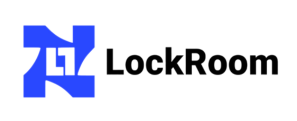
In the fast-paced world of business, mergers and acquisitions (M&A) are critical strategies for growth and expansion. Traditionally, these processes involved extensive paperwork, physical data rooms, and numerous face-to-face meetings, making them cumbersome and time-consuming. However, with the advent of digital technology, virtual data rooms (VDRs) have revolutionized M&A transactions. This article delves into how VDRs improve the process of mergers and acquisitions, highlighting their benefits, features, and overall impact on these complex business transactions.
Virtual data rooms (VDRs) are secure online repositories used for storing and sharing documents. These platforms are especially crucial in financial transactions such as mergers and acquisitions (M&A), where they facilitate the secure and efficient exchange of information. Over the years, VDRs have evolved from basic online storage solutions to sophisticated platforms offering a wide range of features designed to enhance document security, accessibility, and collaboration.
Key Features of Virtual Data Rooms
Security
Virtual Data Rooms (VDRs) are like digital fortresses. They come equipped with top-notch security features, such as data encryption, two-factor authentication, and customizable user permissions. These tools work together to keep your sensitive information safe from prying eyes, ensuring only the right people have access.
Accessibility
Imagine being able to access crucial documents from anywhere on the globe—whether you’re in a bustling city or a remote village. That’s the beauty of VDRs. As long as you have an internet connection, you can get to the information you need. This is especially handy for international M&A deals, where stakeholders are often spread across different time zones and locations.
Collaboration Tools
Working together has never been easier, thanks to VDRs. They offer a suite of collaboration tools that keep everyone in sync. You can see real-time updates, leave comments, and even use Q&A sections to clarify details. These features make communication smooth and decision-making more efficient, bringing your team closer together, no matter where they are.
Role of VDRs in Mergers and Acquisitions
Virtual data rooms play a pivotal role in M&A by streamlining the due diligence process. They offer a centralized platform where all relevant documents can be stored, reviewed, and shared, facilitating a comprehensive and efficient examination of the target company’s assets, liabilities, and operations.
Benefits of Using VDRs in M&A
Efficiency
VDRs significantly reduce the time required to complete due diligence. Automated processes and easy access to documents enable faster decision-making and smoother transactions.
Cost-Effectiveness
By eliminating the need for physical data rooms and reducing travel costs, VDRs offer a cost-effective solution for managing M&A transactions. Additionally, they minimize the risks of data breaches and associated costs.
Transparency
VDRs enhance transparency by providing a clear audit trail of all activities within the platform. This transparency builds trust among stakeholders and ensures compliance with regulatory requirements.
Security Measures in VDRs
Data Encryption
VDRs employ advanced encryption technologies to protect data both at rest and in transit. This ensures that sensitive information remains confidential and secure.
User Permissions
Administrators can set granular user permissions, controlling who can view, edit, or download specific documents. This level of control is crucial for maintaining data integrity and confidentiality.
Audit Trails
Audit trails provide a detailed log of all actions taken within the VDR, including document views, edits, and downloads. This feature enhances accountability and helps in regulatory compliance.
Choosing the Right VDR for M&A
Criteria
When selecting a VDR for M&A, consider factors such as security features, ease of use, customer support, and pricing. The right VDR should meet the specific needs of your transaction and provide a seamless user experience.
Vendor Comparison
Compare different VDR providers based on their features, reputation, and customer reviews. Look for providers that offer comprehensive support and have a proven track record in handling M&A transactions.
Key Considerations
Key considerations when choosing a VDR include the platform’s security certifications, scalability, and ability to integrate with other tools used in the M&A process.
Impact on Due Diligence
Speed
VDRs accelerate the due diligence process by providing instant access to all necessary documents. This speed is critical in competitive M&A environments where time is of the essence.
Accuracy
With centralized and organized document storage, VDRs reduce the risk of errors and omissions in the due diligence process. This accuracy is essential for making informed decisions.
Comprehensive Review
VDRs enable a comprehensive review of all aspects of the target company. Stakeholders can easily locate and examine documents related to financials, operations, legal matters, and more.
Efficiency in Document Management
Organization
VDRs offer robust document management features, allowing users to organize files in a structured manner. This organization facilitates easy navigation and retrieval of documents.
Version Control
Version control features ensure that all stakeholders are working with the most up-to-date documents. This prevents confusion and ensures consistency in the review process.
Accessibility
With VDRs, documents are accessible to authorized users at any time and from any location. This accessibility is crucial for maintaining momentum in the M&A process.
Enhancing Collaboration
Real-Time Updates
Real-time updates keep all stakeholders informed of any changes or new additions to the document repository. This ensures that everyone is on the same page and can make timely decisions.
User Interaction
VDRs provide features such as commenting and discussion threads, allowing users to interact and collaborate directly within the platform. This interaction enhances the overall efficiency of the M&A process.
Communication
Integrated communication tools within VDRs facilitate seamless dialogue between parties involved in the transaction. This communication is vital for addressing queries and resolving issues promptly.
Cost-Effectiveness of VDRs
Reduction in Physical Storage
VDRs eliminate the need for physical data rooms, reducing costs associated with printing, shipping, and storing documents. This reduction translates into significant savings for companies.
Time Savings
By streamlining document management and due diligence, VDRs save valuable time for all parties involved. This time savings can accelerate the overall M&A process and reduce costs related to extended deal timelines.
VDRs vs. Traditional Data Rooms
Comparison
Traditional data rooms require physical presence and manual document handling, leading to inefficiencies and security risks. VDRs, on the other hand, offer remote access, automated processes, and enhanced security.
Pros and Cons
While traditional data rooms may offer a sense of tangibility, they are limited by geographic constraints and higher costs. VDRs provide flexibility, cost savings, and advanced security features, making them a superior choice for modern M&A transactions.
Case Studies
Numerous case studies highlight the successful implementation of VDRs in M&A transactions. These examples demonstrate how VDRs have improved efficiency, reduced costs, and enhanced security for various companies.
Legal and Compliance Aspects
Regulatory Requirements
VDRs help companies comply with regulatory requirements by providing secure storage and management of sensitive documents. Features such as audit trails and user permissions ensure compliance with industry standards.
Compliance Management
VDRs offer tools for managing compliance-related tasks, such as document retention schedules and regulatory reporting. These tools simplify the process of adhering to legal and regulatory obligations.
Case Studies of VDRs in M&A
Success Stories
Several companies have successfully utilized VDRs to streamline their M&A processes. These success stories highlight the benefits of VDRs, including improved efficiency, enhanced security, and reduced costs.
Industry Examples
VDRs have been adopted across various industries, from finance and healthcare to technology and manufacturing. Each industry has unique requirements, and VDRs offer flexible solutions to meet these needs.
Lessons Learned
Case studies provide valuable insights into best practices for using VDRs in M&A. Lessons learned from these examples can help other companies optimize their use of VDRs for successful transactions.
Future Trends in VDR Technology
AI Integration
Artificial intelligence (AI) is set to transform VDR technology by automating tasks such as document classification, data analysis, and predictive insights. AI integration will further enhance the efficiency and effectiveness of VDRs in M&A.
Enhanced Security
Future advancements in security technologies will continue to bolster the protection offered by VDRs. Innovations such as blockchain and advanced encryption methods will provide even greater security for sensitive information.
Future Outlook
The future of VDR technology looks promising, with continuous improvements and new features on the horizon. Companies can expect VDRs to become even more integral to the M&A process, offering greater efficiencies and capabilities.
Challenges and Solutions
Common Issues
Despite their advantages, VDRs can present challenges such as technical difficulties, user resistance, and data migration issues. Identifying and addressing these challenges is crucial for successful implementation.
Mitigation Strategies
To mitigate common issues, companies should invest in training, choose reliable VDR providers, and plan for a smooth data migration process. Proactive measures can help overcome obstacles and ensure a seamless experience.
User Experience in VDRs
Interface Design
A user-friendly interface is essential for ensuring a positive experience with VDRs. Intuitive design, clear navigation, and responsive features contribute to ease of use and efficiency.
Usability
VDRs should be easy to use for all stakeholders, regardless of their technical proficiency. Simplified processes and comprehensive support can enhance usability and adoption.
Support
Reliable customer support is vital for addressing any issues that arise during the use of VDRs. Providers should offer prompt and effective support to ensure a smooth and uninterrupted experience.
Setting Up a VDR for M&A
Step-by-Step Guide
Setting up a VDR involves several steps, including selecting a provider, configuring security settings, and uploading documents. A step-by-step guide can help companies navigate this process with ease.
Best Practices
Best practices for setting up a VDR include ensuring data accuracy, organizing documents logically, and providing adequate training for users. Following these practices can optimize the use of VDRs in M&A.
Training and Support for VDR Users
Resources
Training resources such as tutorials, webinars, and user guides are essential for helping stakeholders understand how to use VDRs effectively. These resources can improve user proficiency and confidence.
Tutorials
Interactive tutorials provide hands-on learning experiences, allowing users to familiarize themselves with VDR features and functions. These tutorials are valuable for both new and experienced users.
Ongoing Support
Continuous support is necessary to address any questions or issues that arise during the use of VDRs. Providers should offer ongoing support to ensure a smooth and successful M&A process.
Frequently Asked Questions (FAQs)
What is a virtual data room?
A virtual data room (VDR) is a secure online repository used for storing and sharing documents, particularly in financial transactions such as mergers and acquisitions.
How do VDRs enhance security?
VDRs enhance security through data encryption, user permissions, and audit trails, ensuring that sensitive information remains protected from unauthorized access.
Can VDRs be accessed remotely?
Yes, VDRs can be accessed remotely from anywhere with an internet connection, providing flexibility and convenience for stakeholders.
What are the cost benefits of using VDRs in M&A?
VDRs reduce costs by eliminating the need for physical data rooms, minimizing travel expenses, and enhancing efficiency, leading to time savings.
How do VDRs streamline due diligence?
VDRs streamline due diligence by providing a centralized platform for storing and reviewing documents, facilitating faster and more accurate decision-making.
What should I consider when choosing a VDR provider?
When choosing a VDR provider, consider factors such as security features, ease of use, customer support, pricing, and the provider’s track record in handling M&A transactions.
Final Thoughts
Virtual data rooms have revolutionized the process of mergers and acquisitions by offering secure, efficient, and cost-effective solutions for managing sensitive information. Their advanced features, such as data encryption, user permissions, and real-time collaboration tools, significantly enhance the due diligence process, ensuring a smooth and successful transaction. As VDR technology continues to evolve, companies can look forward to even greater efficiencies and capabilities, making VDRs an indispensable tool for M&A activities.


